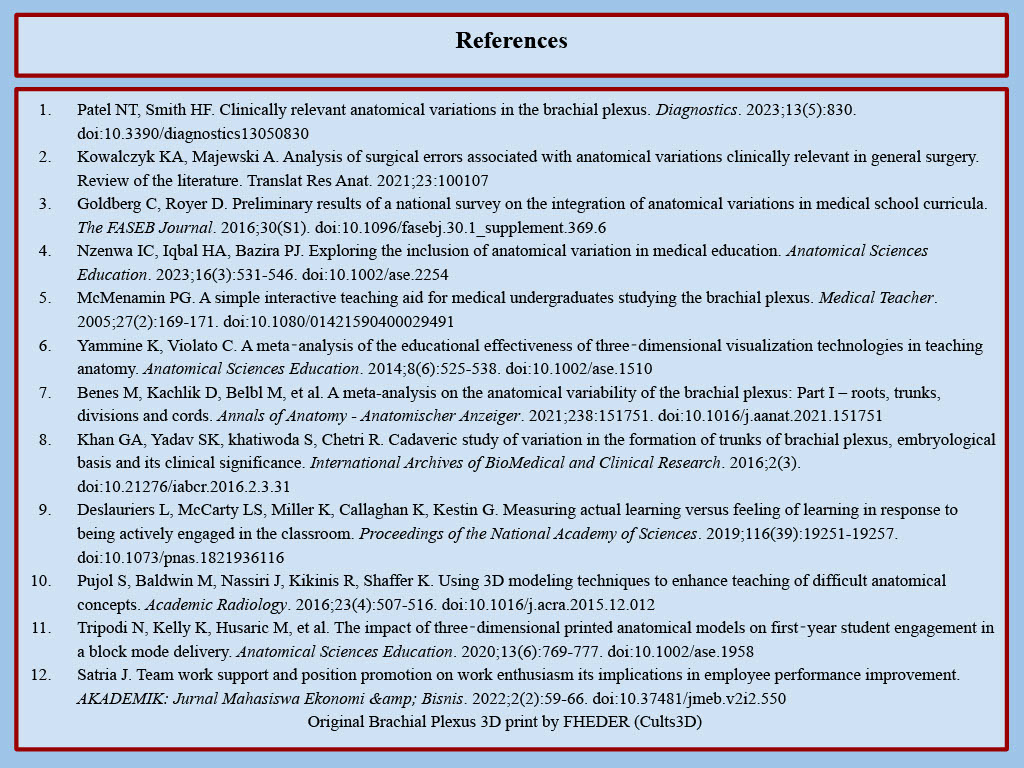We performed a routine cadaveric dissection of the cervical region of a 94-year-old male. Anomalous findings were noted on the right side, including combined variations in the trunks, divisions, and contributions. Three trials of bilateral caliper measurements of the nerves were recorded. Additionally, a bilateral visual analysis of relevant musculature was performed. To investigate how we can best teach complex morphology like what was observed in our donor, we did a follow-up study presenting a lesson on these structures to 46 students at the University of Maryland Eastern Shore who were randomly assigned into 2 groups: one group received didactic instruction on the observed variant while the other received additional 3D-printed learning materials. Performance outcomes and metrics assessing confidence were not found to be statistically significant, however, enjoyment and recommendation of visualization resources were found to be statistically significant. The results of this study encourage future research surrounding the role of enjoyment/engagement in anatomy education.
Additionally, we presented this poster at an annual American Anatomy Association Conference - Anatomy Connected 2024 - in Toronto Canada, ultimately being the first, 1st Year DPT students to present research at a national (international in this case) conference at the University of Maryland Eastern Shore!
Additionally, we presented this poster at an annual American Anatomy Association Conference - Anatomy Connected 2024 - in Toronto Canada, ultimately being the first, 1st Year DPT students to present research at a national (international in this case) conference at the University of Maryland Eastern Shore!






